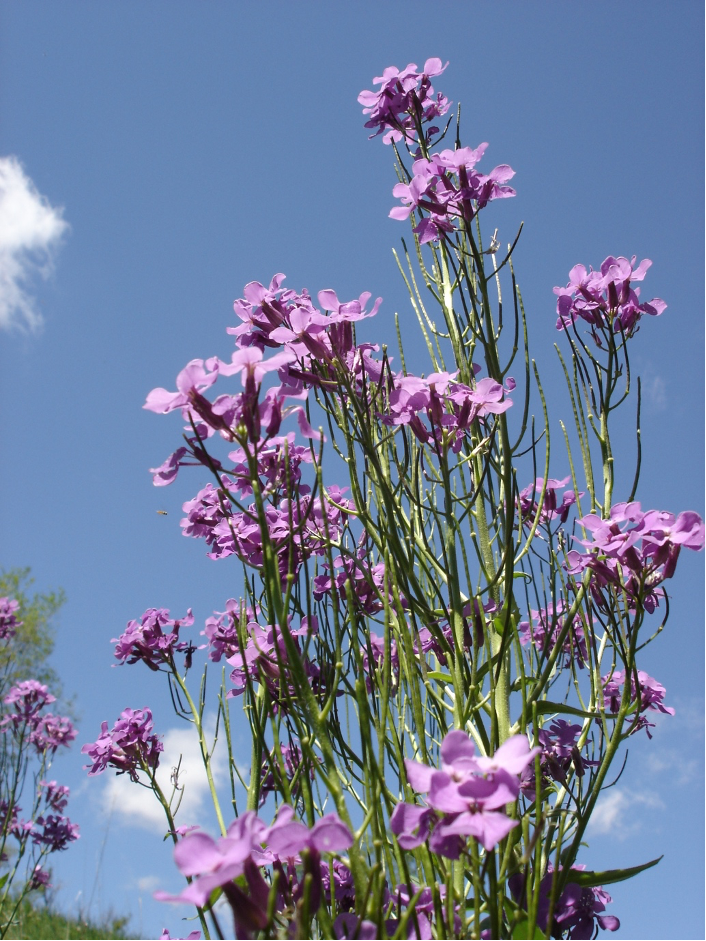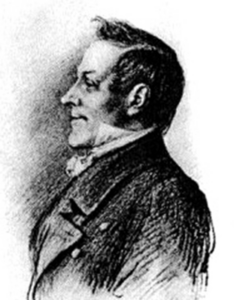Night violets (Dame's violets)
(Poet's title: Nachtviolen)
Set by Schubert:
D 752
[April 1822]
Nachtviolen, Nachtviolen,
Dunkle Augen, seelenvolle,
Selig ist es, sich versenken
In dem samtnen Blau.
Grüne Blätter streben freudig,
Euch zu hellen, euch zu schmücken,
Doch ihr blicket ernst und schweigend
In die laue Frühlingsluft.
Mit erhabnem Wehmutsstrahle
Trafet ihr mein treues Herz,
Und nun blüht in stummen Nächten
Fort die heilige Verbindung.
Night violets! Night violets!
Dark eyes, soulful –
It is blissful to allow yourself to sink
Into that velvety blue.
Green leaves joyfully strive
To brighten you, to adorn you;
But you look out seriously and silently
Into the warm spring air.
With an exalted melancholy beam
You struck my faithful heart.
And now on silent nights it blossoms
Forth, this sacred connection.
All translations into English that appear on this website, unless otherwise stated, are by Malcolm Wren. You are free to use them on condition that you acknowledge Malcolm Wren as the translator and schubertsong.uk as the source. Unless otherwise stated, the comments and essays that appear after the texts and translations are by Malcolm Wren and are © Copyright.
☙
Themes and images in this text:
Blue Eyes Flowers Gazes, glimpses and glances Green Hearts Joy Knots and bonds Leaves and foliage Melancholy Night and the moon Noise and silence Soul Spring (season) Under the water, sinking and drowning Velvet Violets
Eyes meet; a connection is established in a moment, in the blinking of an eye (an ‘Augenblick’ is the German word for ‘moment’). As the poet allows himself into the velvety blue, into the dark, soulful eyes of the violets, the flowers themselves gaze out ‘earnestly and silently’. The ‘melancholy beams’ of light that radiate from them strike the poet’s heart. Their ‘sacred’ bond flourishes at night and in silence.
‘Night violets’ are almost certainly Hesperis matronalis[1], so called because their fragrance is strongest in the evening and at night. However, who or what they truly represent (for the reader as much as the poet), and the nature of the bond that has been established, remains a mystery reserved for the night and silence.
[1] Hesperis matronalis (Gemeine Nachtviole). However, Graham Johnson points out that they could also be Hesperis africana (Afrikanische Nachtviole)
☙


by blueskygirl from Rural, USA (Flikr)
https://www.flickr.com/photos/68473727@N00/15996153
Growing tips: https://www.rhs.org.uk/plants/8681/i-hesperis-matronalis-i/details
Hesperides africana: https://plants.jstor.org/compilation/Hesperis.africana
☙
Original Spelling and Note on the text Nachtviolen Nachtviolen, Nachtviolen! Dunkle Augen, seelenvolle, - Selig ist es sich versenken In dem sammtnen Blau. Grüne Blätter streben freudig Euch zu hellen, euch zu schmücken; Doch ihr blicket ernst und schweigend In die laue Frühlingsluft. Mit erhabnem Wehmuthstrahle Trafet ihr mein treues Herz. Und nun blüht in stummen Nächten Fort die heilige Verbindung. When the text was published in 1824 it was slightly different (see below, with changes in bold). It appears that Schubert worked from (and made changes to) an earlier manuscript version by the poet, which has been preserved in Vienna City Library. Nachtviolen Nachtviolen, Nachtviolen! Dunkle Augen, seelenvolle, - Selig ist es sich vertiefen In das sammtne Blau. Grüne Blätter streben freudig Euch zu hellen, euch zu schmücken; Doch ihr schauet ernst und ahnend In die laue Sommerluft. Ja, so fesselt ihr den Dichter: Mit erhabnen Wehmutsstrahlen Trafet ihr sein treues Herz. Und so blüht in stummen Nächten Fort die heilige Verbindung. Unaussprechlich, unbegriffen, Und die Welt erreicht sie nicht.
Confirmed with Gedichte von Johann Mayrhofer. Wien. Bey Friedrich Volke. 1824, page 121; and with Gedichte von Johann Mayrhofer. Neue Sammlung. Aus dessen Nachlasse mit Biographie und Vorwort herausgegeben von Ernst Freih. v. Feuchtersleben. Wien, 1843. Verlag von Ignaz Klang, Buchhändler, page 214.
Note by Peter Rastl: Schubert received Mayrhofer’s texts in handwriting; the manuscripts of his cycle Heliopolis, dedicated to Franz von Schober, are preserved in the Vienna City Library. The printed edition of Mayrhofer’s poems appeared much later and presents the texts in a revised version. This poem (originally no. 4 of the cycle) is not part of the cycle in the printed edition of 1843. Here it is no. 1 of the cycle Nachtviolen.
To see an early edition of the text, go to page 121 [135 von 212] here: http://digital.onb.ac.at/OnbViewer/viewer.faces?doc=ABO_%2BZ177450902


